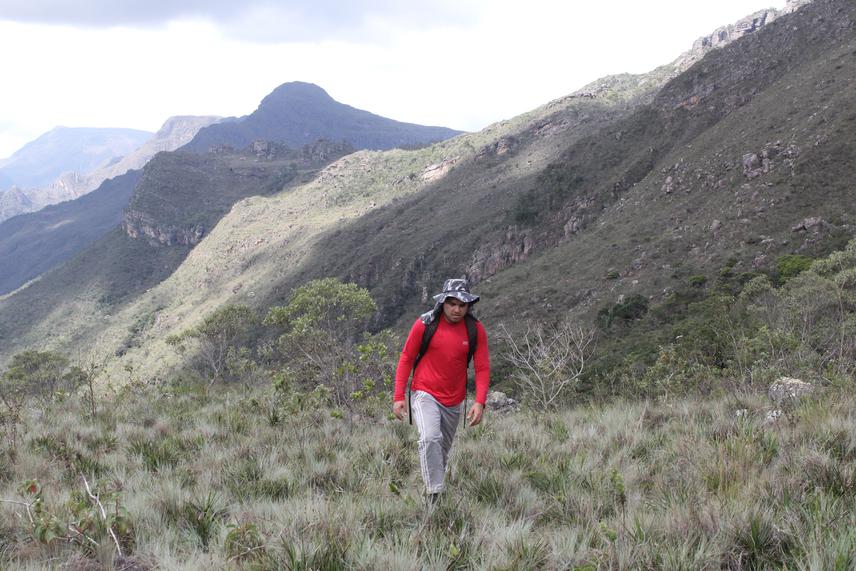Arthur de Souza Soares
Since it was proposed, Oocephalus (Hyptidinae subtribe, Lamiaceae family) does not have a specific study to delimitate its species. Geographically, the genus is of particular interest, which is almost entirely endemic to the Brazilian Cerrado, one of the world's biodiversity hotspots and is still under threat by deforestation and livestock. This study aims to improve the delimitation of Oocephalus species by molecular and morphoanatomic analysis, searching for characters to test its monophyly. At the end, this study intends to improve the knowledge of the Brazilian flora and creating taxonomic subsidies to improve conservation policies to this rich and threatened biome.

Field trip.
The Hyptidinae subtribe, Ocimeae tribe and subfamily Nepetoideae (Lamiaceae), has its predominance occurrence in the Neotropical region, with only two species extending its range to Africa (Harley et al. 2004). The first phylogeny of Hyptidinae (Pastore et al. 2011) proved its monophyly but also has shown that the genus Hyptis Jacq. was seriously paraphyletic. Based on the molecular information and morphological evidence, Harley & Pastore (2012) proposed a new generic delimitation in the subtribe, elevating section of the genus Hyptis to generic level. Currently, the subtribe has 19 genera and approximately 400 species.
Currently, the newly dismembered genus Oocephalus (Benth.) Harley & J.F.B. Pastore, previously subsect. Glomeratae Benth. and subsect. Oocephalus (Benth.) Epling, (both located in Hyptis sect. Polydesmia Benth.), Has 18 species that occur mainly in the mountainous regions of central Brazil, such as the campos rupestres of Espinhaço range, Chapada Diamantina and the Planalto of the state of Goiás (Harley 2014). Although most species are restricted to these environments, O. oppositiflorus (Schrank) Harley & J.F.B. Pastore has a wider distribution and can be found south of the state of Piauí, east of São Paulo state and eastern Bolivia (Harley 2014). Morphologically, Oocephalus is classified by the characters of its inflorescence, as the entire subtribe where it belongs (Harley & Pastore 2012). On the other hand, the previously classification (Epling 1949) usually divided the species in two distinct groups (subsect. Glomeratae and subsect. Oocephalus), based on the calyx morphology, making the present classification quite heterogeneous, with two subgroups.
Anatomy has shown to be quite efficient in elucidating taxonomic problems in several families, especially with leaf characters (Solereder 1908; Metcalf & Chalk 1950; Rudall 1993; Diane et al. 2003; Coutinho et al. 2013). Studies with this focus on Hyptidinae are scarce, highlighting the contributions of Rudall (1980a, 1980b 1981).Despite the great contribution that these study brought to the subtribe, only two species of Oocephalus were analysed by the author, leaving the genus subsampled and lacking in anatomical information.
Since it was proposed, Oocephalus does not have a specific study to delimit its species, which was suggested by Harley & Pastore (2012), who recognized the need for more deeply morphological studies in the genus. Furthermore, a phylogenetic analysis with all species been sampled, will show the relationship between the species and, combined with the morphoanatomical data, it will be possible to know which characters are directly linked with the genus diversification.